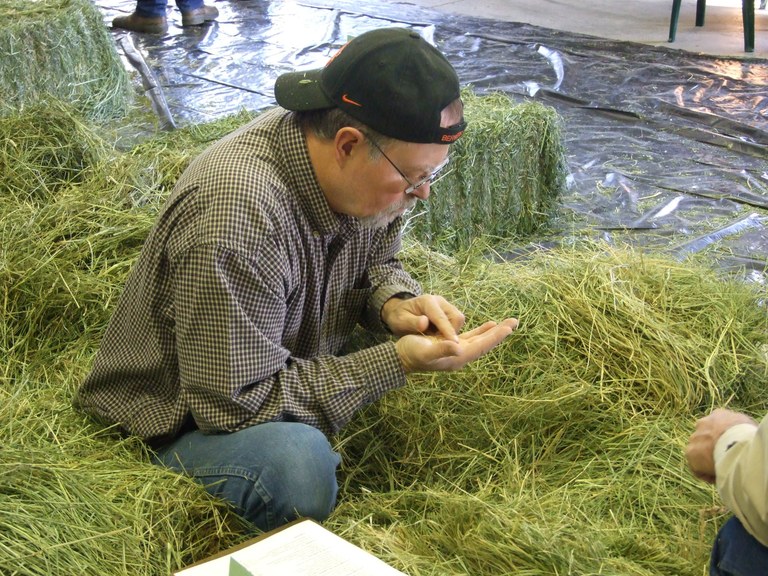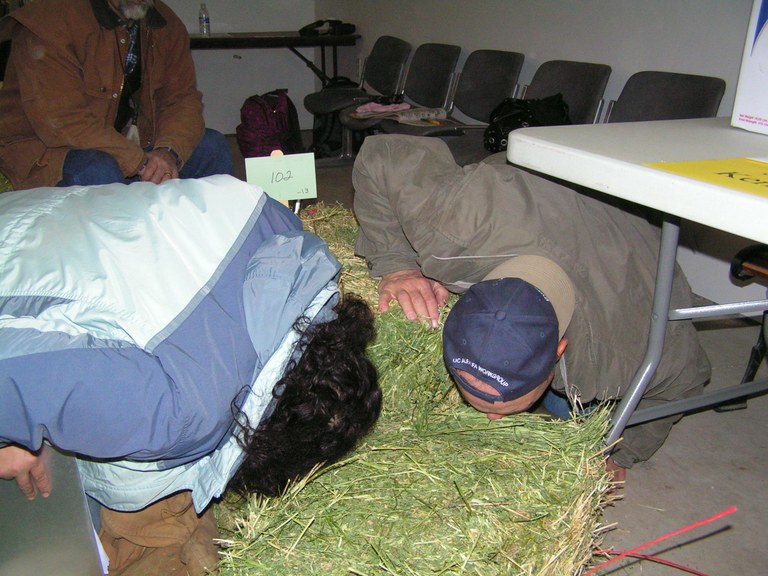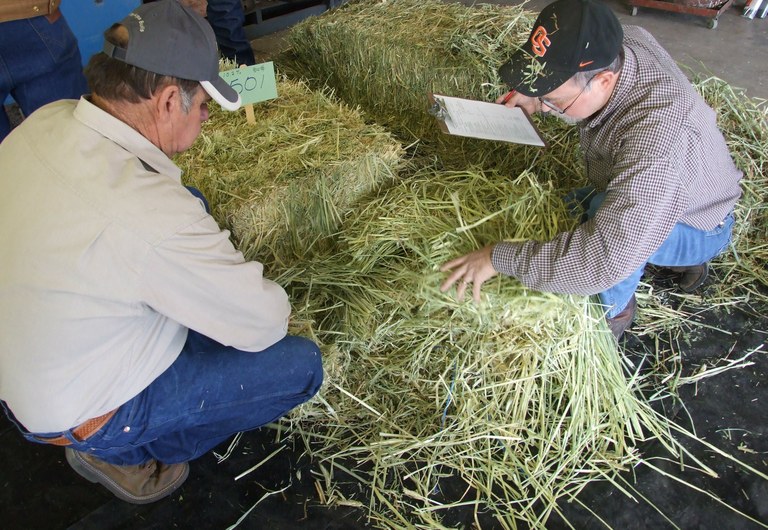Before you Load up the Hay Wagon: Know What You’re Hauling
This year hay is in short supply and many grain crops have been set back due to drought or hail damage. This may create a market place for a variety of interesting forage options to get cows through the winter. Using alternative forage resources such as grazing or feeding baled crops and residues or using cereal hays may be just the angle you are bending. Before you load up the hay wagon there are some things you should consider.
Evaluating Forage Quality Is Important
Sensory Evaluation
Sensory evaluation includes evaluating the amount of leaf to stem material and uses sight, texture, and smell. The leafy portion of the plant provides the greatest amount of digestible nutrients. A greater leaf to stem ratio can indicate higher quality forage. Bright colored forage indicates proper cure and hay will likely have good palatability for livestock. However, color alone may be deceiving, sun bleaching is not as damaging to forage quality as rain, both of which cause discoloration. Rain can leach soluble nutrients, thus lowering the nutrient content of the forage. Smell can indicate forages that have heated or may have mold problems. Sensory appraisal is important but should not be the stand-alone evaluation method. Sensory evaluations should accompany a nutrient analysis of the forage, by wet chemistry or NIRS (near infrared reflectance spectroscopy).



Nutrient Evaluation
Determining the chemical composition is essentially the nutrition label or “feed tag” for the forage. Forage quality testing is important as a management and marketing tool. Selling hay with a hay test allows the seller and buyer to find a price that makes sense. A nutrient analysis helps the end user organize the forage supplies to best match the cow’s nutrient requirements at various stages of production. Another advantage when purchasing hay is not purchasing excess nutrients or paying for nutrients not in the bale.
Forage Sampling Technique
The most important step in analyzing forage quality starts with the technique used in obtaining the “representative” sample to send to the lab. The goal is to obtain a sample that best represents the lot (stack) of forage to be analyzed. A total of 20 cores per lot of hay is the gold standard. Avoid exposing the sample to excessive heat or the sun. Ship the entire sample to a National Forage testing association certified lab as soon as possible.
Bale weight
Another over looked item is bale weight. Hay is frequently sold by the “package” or bale. Not all packages are the same and can range from 1000 to 1500 lbs or more for large round bales. Not all bales have the same dry matter content—it is expensive to purchase and haul water in a bale! Consider purchasing and selling hay on a dry weight basis instead of a package basis.
Sensory and laboratory analysis and known bale weights take the guesswork out of purchasing, selling, and feeding forage and allows for equitable pricing and the ability to meet the nutrient requirements of your livestock.
Chanda Engel
chanda.engel@ndsu.edu
Livestock Research Specialist


